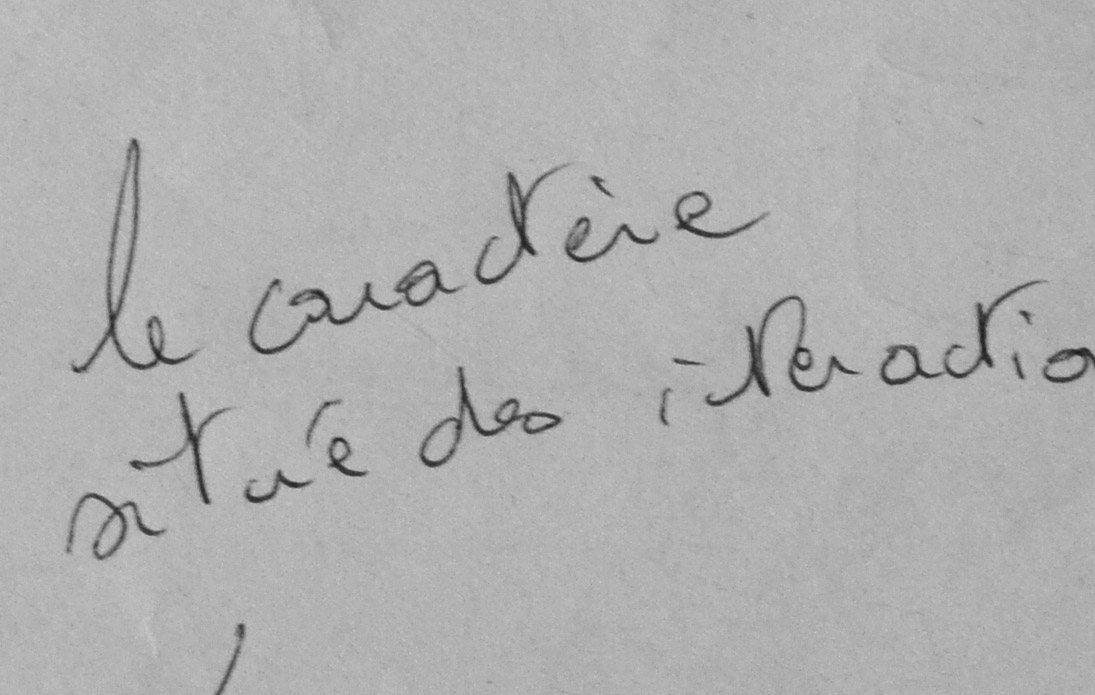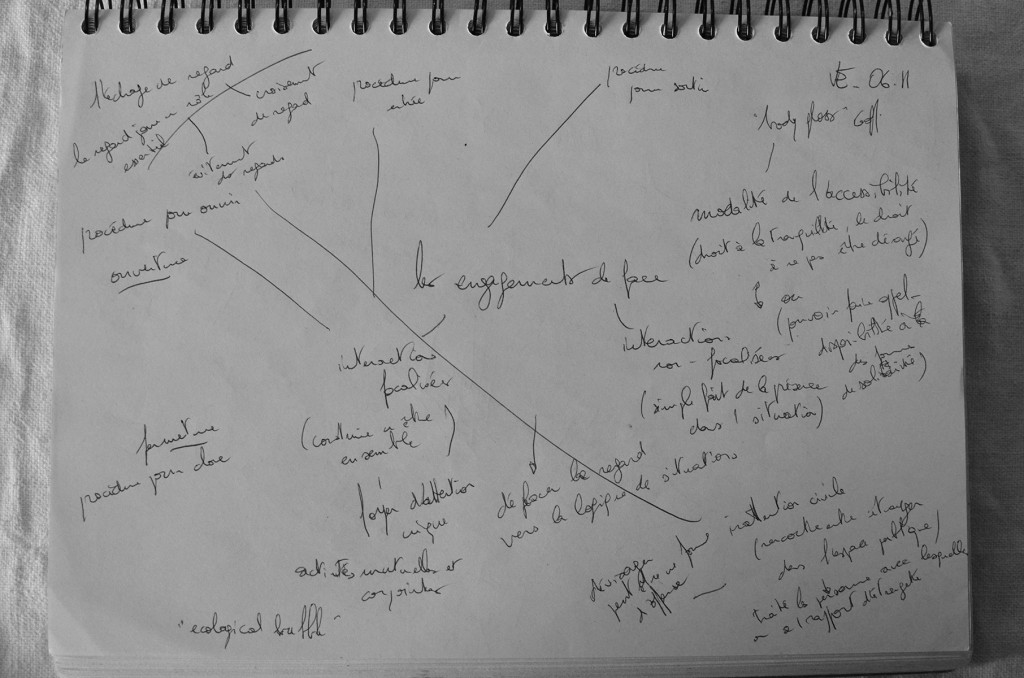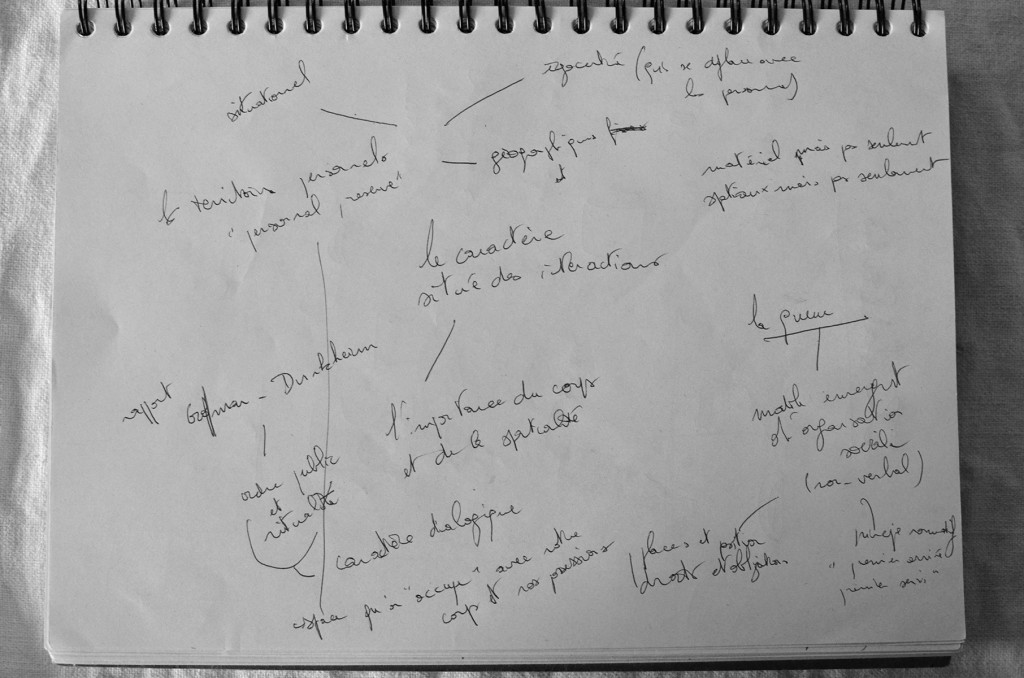Vidéo-ethnographique – 2015 11 06
A/ biblio Goffman
Sur la mise en perspective des théories de l’activité
Licoppe, C., 2008. » Dans le carré de l’activité : perspectives internationales sur le travail et l’activité », Sociologie du Travail 50(3), pp. 287-302.
- Le second Goffman, théoricien de l’activité et sociologue du soupçon
Goffman, E. (1971). Relations in Public. Microstructure of the Public Order. New York, Harper & Row.
Goffman, E. (1974). Frame Analysis. An essay on the Organization of experience. New York, Harper and Row. (titre traduction française : Les cadres de l’expérience, Editions de Minuit).
Goffman, E. (1981). Forms of Talk. Philadelphia, University of Pennsylvania Press.
- Quelques reprises de l’interactionnisme de Goffman en France
Joseph, I. ed. (1989). Le parler frais d’Erving Goffman. Paris Editions de Minuit. (Ouvrage collectif)
Joseph, I. (1998). Erving Goffman et la microsociologie. Paris, Presses Universitaires de France.
Cefai, D. (2007). La mobilisation collective. Paris. La Découverte
- Les développements de la théorie goffmanienne du cadre de participation en anthropologie linguistique
Levinson, S. (1988). Putting linguistics on a proper footing. Erving Gofman. Exploring Social Order. W. Drew P., A. Cambridge, Polity Press: pp. 161-227.
Hanks, W. (1990). Referential Practice. Chigago, Chicago University Press.
Duranti, A. (1997). Linguistic Anthropology. Cambridge, Cambridge University Press
Goodwin, C., & Goodwin, M. (2004). Participation. Handbook of Linguistic Anthropology. A. Duranti. London, Blackwell: p. 222-244.
- Les notions goffmaniennes et l’analyse de conversation
Lerner, G. (1996). « Finding « Face » in the Preference Structure of Talk-in-Interaction. » Social Psychology Quarterly 59(4): pp. 303-321.
B / notes
les engagements de face
interactions focalisées / interactions non focalisées
modalités de l’accessibilité
le caractère situé des interactions – les territoires personnels – l’importance du corps et de la spatialité
ordre public et ritualité
C / téléchargement
Introduction vidéo-ethnographie



